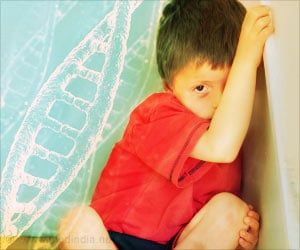A new brain-imaging study from the Stanford University School of Medicine claims that the brains of children with autism are relatively inflexible at switching from rest to task performance.

The study, which will be published online July 29 in Cerebral Cortex, used functional magnetic resonance imaging, or fMRI, to examine children's brain activity at rest and during two tasks: solving simple math problems and looking at pictures of different faces. The study included an equal number of children with and without autism. The developmental disorder, which now affects one of every 68 children in the United States, is characterized by social and communication deficits, repetitive behaviors and sensory problems.
"We wanted to test the idea that a flexible brain is necessary for flexible behaviors," said Lucina Uddin, PhD, a lead author of the study. "What we found was that across a set of brain connections known to be important for switching between different tasks, children with autism showed reduced 'brain flexibility' compared with typically developing peers." Uddin, who is now an assistant professor of psychology at the University of Miami, was a postdoctoral scholar at Stanford when the research was conducted.
"The fact that we can tie this neurophysiological brain-state inflexibility to behavioral inflexibility is an important finding because it gives us clues about what kinds of processes go awry in autism," said Vinod Menon, PhD, the Rachel L. and Walter F. Nichols, MD, professor of psychiatry and behavioral sciences at Stanford and the senior author of the study.
The researchers focused on a network of brain areas they have studied before. These areas are involved in making decisions, performing social tasks and identifying relevant events in the environment to guide behavior. The team's prior work showed that, in children with autism, activity in these areas was more tightly connected when the brain was at rest than it was in children who didn't have autism.
The new research shows that, in autism, connectivity in these networks that can be seen on fMRI scans is fairly similar regardless of whether the brain is at rest or performing a task. In contrast, typically developing children have a larger shift in brain connectivity when they perform tasks.
Advertisement
Children with autism performed as well as their typically developing peers on both tasks — that is, they were as good at distinguishing between the faces and solving the math problems. However, their brain scan results were different. In addition to the reduced brain flexibility, the researchers showed a correlation between the degree of inflexibility and the severity of restrictive and repetitive behaviors, such as performing the same routine over and over or being obsessed with a favorite topic.
Advertisement
"The findings may help researchers evaluate the effects of different autism therapies," said Kaustubh Supekar, PhD, a research associate and the other lead author of the study. "Therapies that increase the brain's flexibility at switching from rest to goal-directed behaviors may be a good target, for instance."
"We're making progress in identifying a brain basis of autism, and we're starting to get traction in pinpointing systems and signaling mechanisms that are not functioning properly," Menon said. "This is giving us a better handle both in thinking about treatment and in looking at change or plasticity in the brain."
Source-Eurekalert













